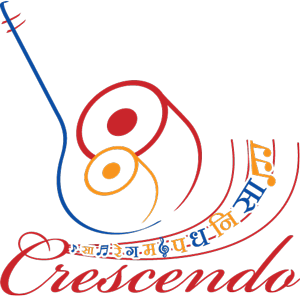In Indian Classical music 3 saptaks (Octaves) are usually utilized.
Saptak : When the set of seven notes is played in the order it is called a Saptak (i.e. Sa , Re, Ga, Ma, Pa, Dha, Ni)
Maddhya Saptak : The normal tone of human voice, which is neither high nor low. It is called Maddhya Saptak (Middle
Octave). This has got no symbol in the notation system.
Taar Saptak : The one higher than Maddhya Saptak is Taar saptak (High). The notes are high and sharp. This shown by
a dot above the note. Two dots above the note imply a note of an octave higher than the Taar Saptak i.e. Ati Taar
Saptak.
Mandra Saptak : The one below the Maddhya Saptak is called Mandra saptak(Low). Notes of this octave are sung or played
in a low deep tone. This comprises of the saptak which is below the lower Sa of the Maddhya Saptak. Notes of this
saptak are indicated by a dot below the note.
It's possible in case of stringed instruments such as Sitar to go to the octave lower than the Mandra saptak. It's
known as the Ati Mandra Saptak. The notes of this saptak are indicated by two dots below.
In the saptak (scale) the Sa gets repeated after the Ni. The Frequency of the second Sa is twice the frequency of the
first Sa. The second Sa is termed as Taar Shadja. From this Taar Shadja the same saptak gets repeated (But this time
at twice the frequency of the respective swar. It's then called taar Saptak.)
 |
 |
 |



